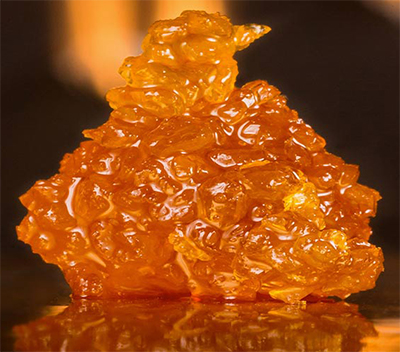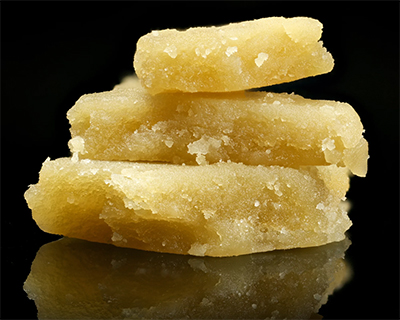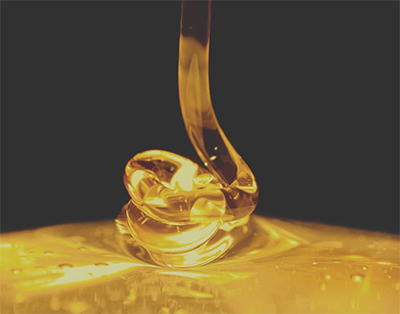In the world of cannabis, there are different types and kinds, and sometimes, it can be hard to know what is what.
Have you ever mistaken two people for each other? If yes, you already understand the embarrassment that comes with realizing your mistake. That’s especially when you really should have been able to tell them apart. We get the same feeling when we see “cannabis aficionados” use live resin, live rosin, and distillates interchangeably.
Like identical triplets, live rosin, live resin, and distillates are all cannabis concentrates that look alike. So, it’s easy to confuse them with each other. However, while the confusion is understandable, it’s not justifiable. That’s because even if the three concentrates have many things in common, they also possess unique characteristics that make it easy to separate from each other.
In this article, we aim to ensure that you know live rosins, live resins, and distillates like the back of your palm and differentiate them with impeccable accuracy. From the extraction process to terpenes and other characteristics, you’ll learn everything you need to know about what sets each concentrate apart. Ready? Let’s get started.
What are Live Resins?
 Live resin is “live” because it’s made from fresh marijuana buds. However, they are flash-frozen as soon as they are harvested to preserve the terpenes and cannabinoids and also prevent oxygen exposure. The plant’s chemical profile is also extracted using butane, carbon dioxide, and other appropriate solvents.
Live resin is “live” because it’s made from fresh marijuana buds. However, they are flash-frozen as soon as they are harvested to preserve the terpenes and cannabinoids and also prevent oxygen exposure. The plant’s chemical profile is also extracted using butane, carbon dioxide, and other appropriate solvents.
Besides helping to maintain its robust terpene and cannabinoid content, this extraction method also preserves its aroma profiles and rich flavors. These characteristics work together to produce the “entourage effect” that makes it the absolute favorite of many cannabis enthusiasts.
The entourage effect describes users’ therapeutic feelings after vaping live resins and other cannabis concentrates. It stems from the idea that whole-plant marijuana contains hundreds of cannabinoids and terpenes that synergize to produce a more balanced experience than when consumed in isolation.
Live resin comes in numerous viscosities that typically range from crumbly to syrup-like. It also comes in different colors, and marketers often sell them as badder, butter, live sap, shatter, and jelly.
Live Rosins Explained
 Like live resins, live rosins are made from fresh, uncured cannabis flowers. They also have high terpene and cannabinoid contents, making them one of the most potent cannabis extracts. However, unlike live resins, live rosins are squeezed or made to undergo pressure to separate the resin from the rest of the plant and involve more labor than live resins do. They also pass through a 100% natural process without using any solvents.
Like live resins, live rosins are made from fresh, uncured cannabis flowers. They also have high terpene and cannabinoid contents, making them one of the most potent cannabis extracts. However, unlike live resins, live rosins are squeezed or made to undergo pressure to separate the resin from the rest of the plant and involve more labor than live resins do. They also pass through a 100% natural process without using any solvents.
Due to these factors, live rosins are generally viewed as the most superior of the three cannabis concentrates. Many believe they are not as toxic as live resin and distillates. As such, they’re the most expensive, rarest, and highest in demand.
What are Distillates?
 Unlike live rosins and live resins, distillates are not made from fresh cannabis material. Instead, they are the product of dried and cured marijuana buds that are extracted using ethanol, butane, CO2, or any other appropriate chemical solvent.
Unlike live rosins and live resins, distillates are not made from fresh cannabis material. Instead, they are the product of dried and cured marijuana buds that are extracted using ethanol, butane, CO2, or any other appropriate chemical solvent.
It doesn’t stop there. After extracting and isolating a cannabinoid or other compound from plant material, it is decarboxylated into crude oil and distilled by passing through a fractional short-path distillation process for purification and refinement.
Decarboxylation is a heating process that helps to convert naturally occurring cannabinoid acids like THCA and CBDA into THC. In other words, when the THCA and CBDA are heated to a point, the compounds are activated, making the final product more potent than it already was.
Note that during decarboxylation, some terpenes are lost or altered, thereby affecting the final product’s aroma and flavor profile. As such, the manufacturers may decide to add more terpenes for improved flavors and aromas. Distillates that come with a strain label often have added terpenes that copy the strain’s effects and flavors. It’s also important to note that production processes may vary slightly depending on the company.
Compared to live resins and live rosins, distillates are very potent and versatile. They are also the most commonly available in the market.
Wrap Up
There you have it—the differences between live resins, live rosins, and distillates in the simplest form. If you enjoyed this article, be sure to follow us for more.

